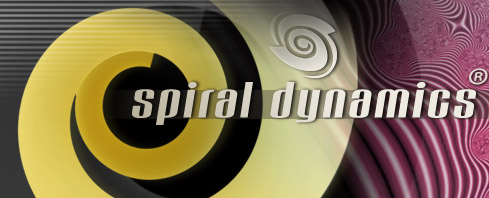 |
 |
|||||||
 |
||||||||
|
The SPIRAL DYNAMICS® Leadership Program Humans have been struggling to understand leadership - the interpersonal dynamics that cause one person's behavior to influence the perceptions and behaviors of others - throughout the history of our species. There are many 'schools' of leadership, and almost all have contributed new insights about how Homo sapiens works. Books and conferences about the topic are endless. Leadership training is big business. What NVCC can contribute is an organizing principle for the various approaches because there are congruent forms of leadership at each level on the spiral. In our view, leadership is about interpersonal relations - whether in management, education, psychology, coaching, business, governance, or some other aspect of human affairs. Leadership studies seek to explain the interpersonal forces at work in a leader:follower relationship. Leadership of groups is a collection of one-to-one interactions with a common purpose, an intention which might be apparent or not, agreed or not. This influence occurs, both directly and indirectly, in particular ways in different vMeme systems. Whether dominated by sacrificial (communal) or expressive (individualistic) systems is a major factor. Aiming leadership at the wrong systems family, much less the wrong vMeme, is why leadership efforts sometimes fall flat; focusing in like a laser beam at the right place helps them to succeed. Sometimes the alignment comes 'naturally' and easily, and sometimes it is a forced fit that requires a lot of effort. Since both the leader and the follower are meeting needs, and the biopsychosocial systems at work are indicative of those needs, accurate recognition of both levels and the needs in their particular expressions is another chunk that application of SD can flesh out greatly. Basically, effective leadership is about congruence of both purpose and coping systems. There is no such thing as a universal leader or follower 'type,' nor are there traits of 'the leader.' In some systems, the line between leader and follower is sharp; in others, it is very fuzzy. Sometimes the roles reverse as situations change, and sometimes leadership must be no more than subtle facilitation lest to much authority trigger a backlash. Primitive efforts to describe leadership are like slivers from a spectrum - prescriptive catalogs of traits and behaviors that fit a narrow range. More sophisticated approaches factor in context and interpersonal skills, adding some flexibility. But few reflect the whole range of possibilities that shining the light of leadership through a Gravesian prism does. Most leadership models are niche-specific or else so general as to be impossible to apply concretely. Laying a good understanding of the spiral over them adds finesse and specificity. Leadership can be transitory. Existential problems (life conditions) might change, thereby taking a leader:follower relationship out of alignment. Sometimes one or both can realign to restore fit, sometimes not. And neuronal systems (mind capacities) might change, causing perceptions of circumstances and other people to be altered. In either case, what once was harmonious goes out of tune. Sometimes restoring balance requires a change of either the leadership or the followership, maybe both. Sometimes, a reframe of the conditions or an adjustment of the style is enough to get a fresh start. Leaders and followers come into alignment - and fall out of it - because of situations outside and capacities inside. This is driven by the double-helix forces in change. The simplest formula is to build a leadership system that operates 1/2 system ahead of people to be led if they are open or somewhat arrested. Build one that matches their level if they are largely closed. Providing leadership from a half step ahead demonstrates somewhat greater complexity without over-stretching, and allows for growth. Matching provides stability in a status quo with minimal threat when growth is unlikely. Operate with a style from too far ahead and people don't know what the leader is talking about; operate behind the curve and the followers ask what use the leadership is, anyway. To do this, you must be able to differentiate among the sub-systems with precision and know principles for dealing with people thusly centralized. The Design Question structures an analysis of appropriate leadership. This deceptively simple question is: "How should who lead whom to do what when? And why?" If you can provide a full answer to this question, you're closing in on what "leadership" needs to be.
Given this process, how might you apply the Spiral model to leadership? After asking the Design Question and fleshing out all of its parts, do some spiral analysis and apply the models expanded on in training by: Differentiating - needs of potential followers and aspiring
leaders
For a discussion of our training, visit http://www.spiraldynamics.org/sd_in_action_leadership.htm |
|||
About SD | SD in Action | About NVC Consulting | Training | Resources | FAQs | Newsletter